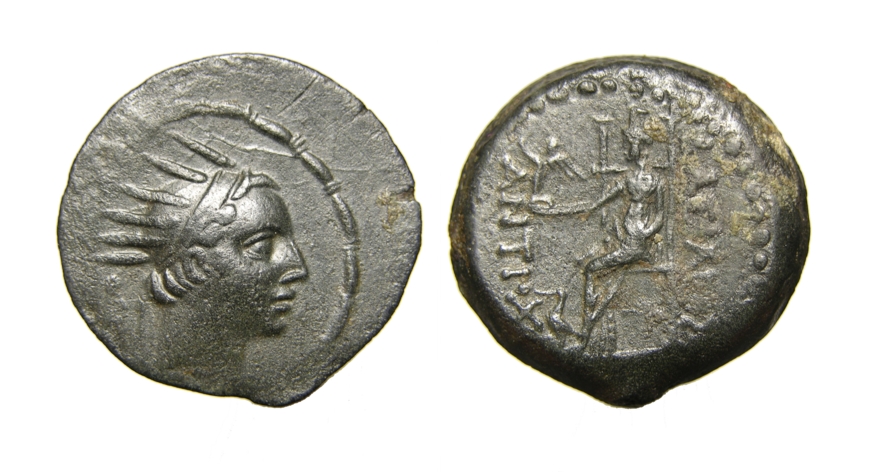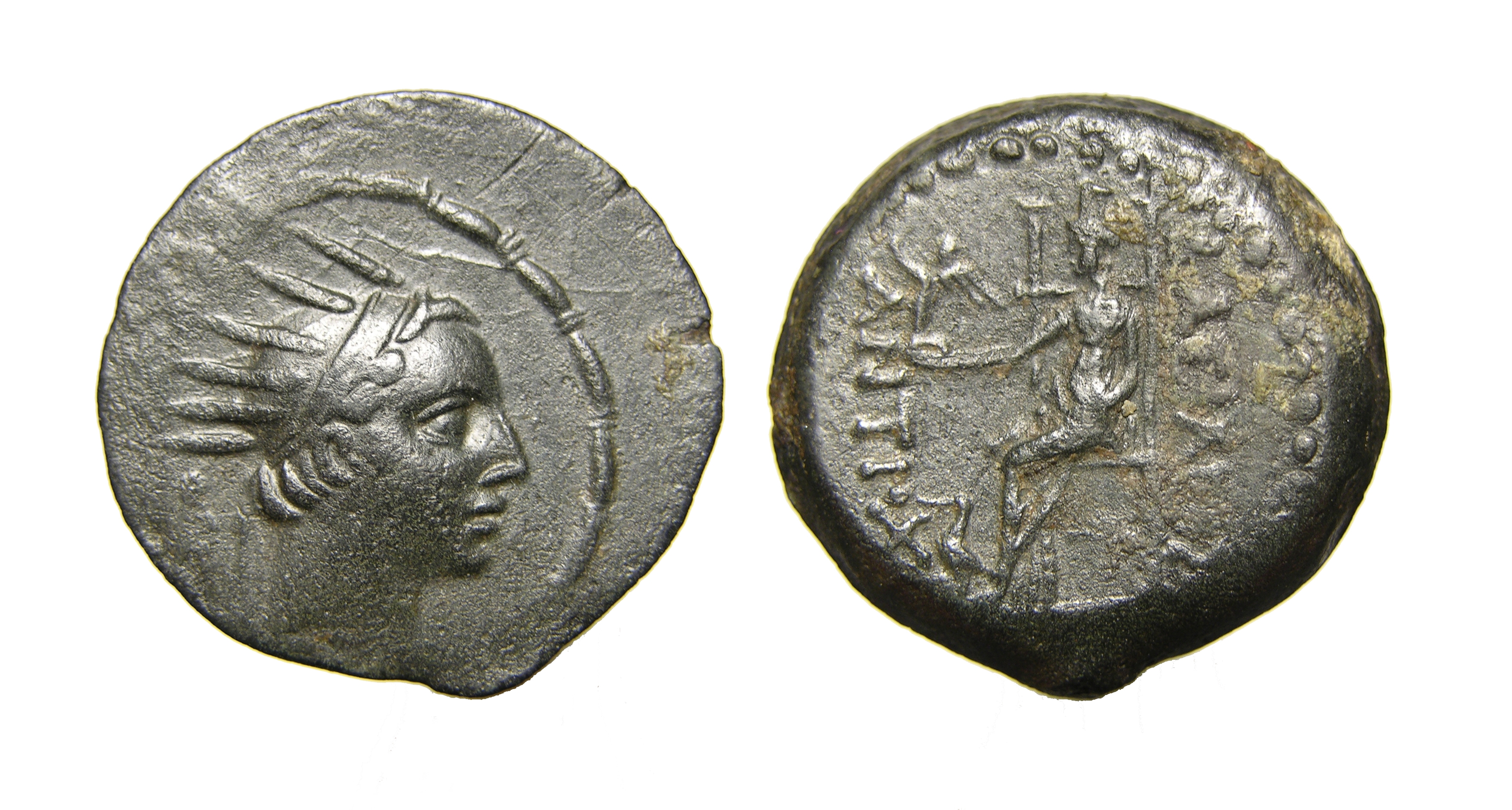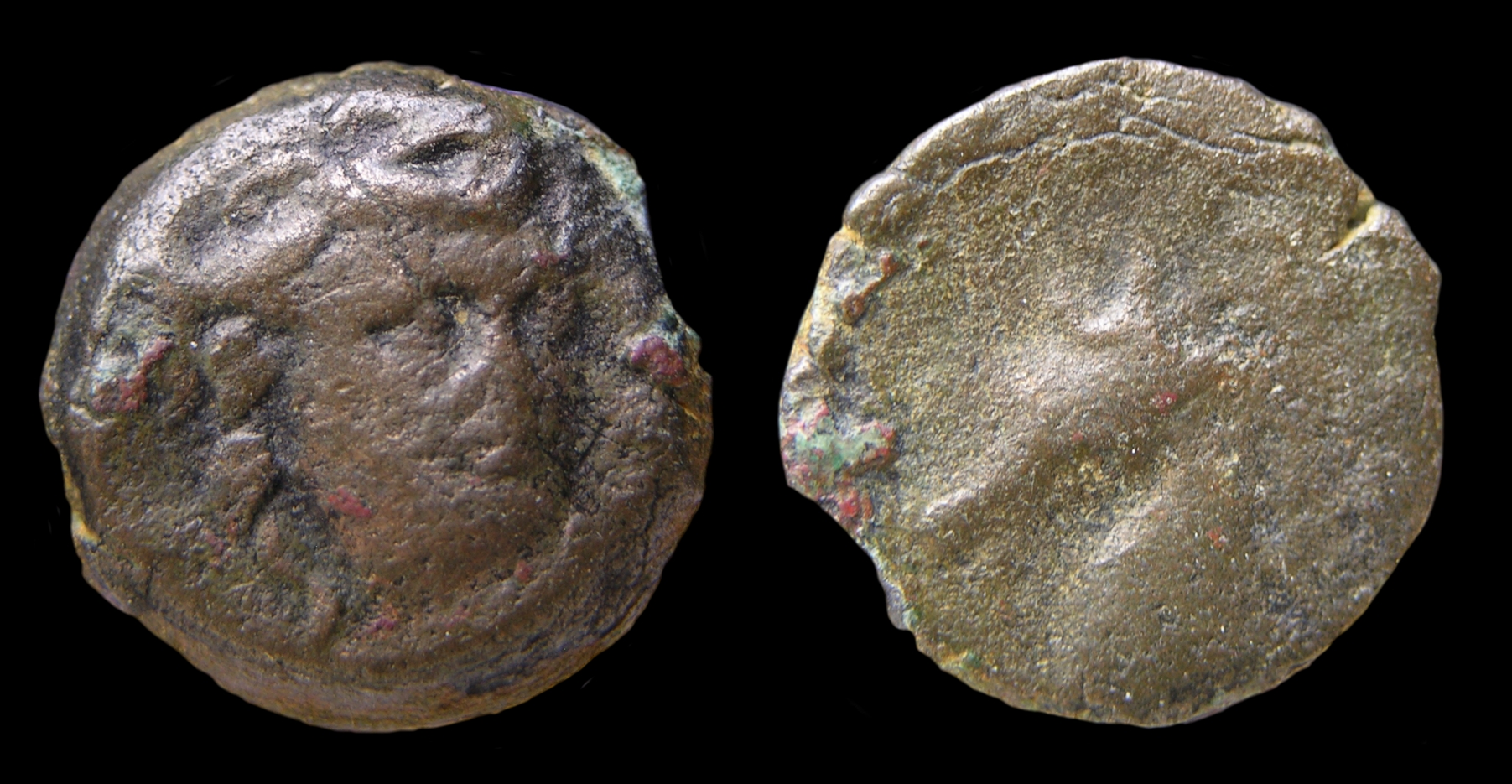 Hover to enlarge
Hover to enlarge

Antiochus IV
Mint: Seleucia on the Tigris
AE Dichalkon
173/172 BC
Obvs: Radiate head of Antiochus right, within fillet border. BX monogram behind head.
Revs: BAΣIΛEΩΣ ANTIOXOY, goddess with polos seated left on high-backed throne holding Nike. Bird standing left at feet, dotted border.
20x21mm, 6.68g
$0.00
Order # G 281
Ref: SC 1509; HGC 9, 637(R2)
NFS
 Hover to enlarge
Hover to enlarge
